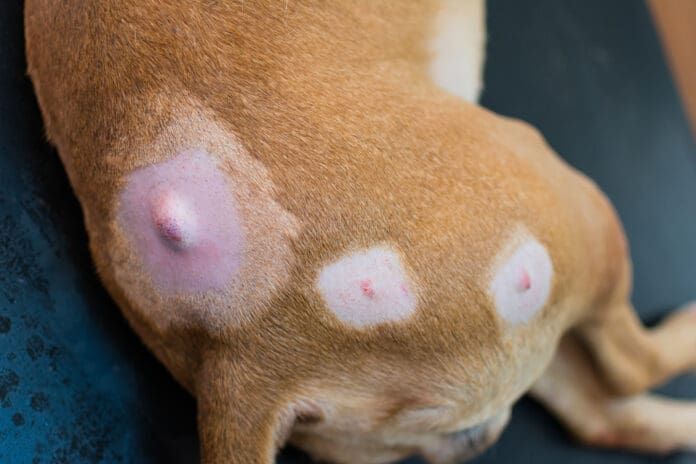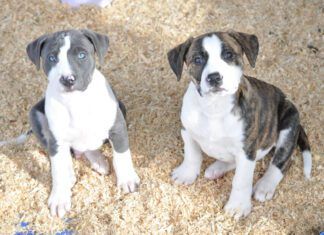Terminology is important when it comes to lumps or bumps on your dog’s skin. A “cyst” is a capsule that usually has fluid in it, although it can have air as well. “Tumor” is a general term, basically a generic swelling or mass. The terms tumor and neoplasm tend to be used interchangeably.
A neoplasm is a mass with abnormal tissue. It can be benign (slow growing and noninvasive) or malignant (rapid growth with spread to other tissues). It may be cancerous or noncancerous.
Overall, lumps and bumps tend to be solid tissue masses, but a bump like a superficial abscess may have pus as well as some solid tissues.
Should You Worry About a Lump?
Most benign growths are superficial. They are only in the outermost layers of the skin, so they are movable and not firmly attached to the body and underlying tissues. They are not usually red or inflamed or painful. Most develop slowly.
If you notice any growths on your dog, track the location and size. Checking once a month is a good recommendation. If things change, contact your veterinarian for an exam. Your chart of the growth’s history will be helpful.
If your veterinarian has any concerns, the first step is generally a needle aspiration, which is done without any anesthesia and provides your veterinarian with cells to examine under the microscope.
Common Types of Lumps, Cysts, and Tumors
Cysts: Some skin cysts have a clear, thin layer of tissue. Your veterinarian can drain a cyst, but without removal of the capsule, it will often refill.
Sebaceous cysts: These cysts tend to be firm and white or gray in color. They do not drain easily and may rupture and become infected.
Skin tags: Small skin tags and wart-like growths tend to be benign but may irritate your dog due to their location. If they’re irritating, you can discuss removal with your veterinarian.
Lipomas: Lipomas are fatty neoplasms that tend to be smooth, often round, and benign. They can be moved around in the skin a bit and you can usually feel underneath them. Some of these can get quite big and may not be as movable then.
Hives and welts: Hives, welts, and allergic reactions can crop up very quickly. My shorthaired Cirnecho dell Etna was “popping up” hives as we watched during one very buggy night at training class. These lumps disappeared quickly with a dose of antihistamine.
Mast cell tumors: These tricky skin growths usually appear benign, somewhat superficial and with no inflammation. Often, if they are rubbed, they will have a temporary increase in size, the skin will get red and warm, and your dog may bite or itch at them. This is all due to histamine release from the irritated mast cells. Mast cells growths require veterinary intervention.
Just like us, our dogs can have a variety of skin tags, growths, lumps, bumps, and cysts—and hygromas. Most of these are benign, but some can indicate other problems or even cancer. Erring on the side of caution with a veterinarian appointment is wise. Everything is easier to handle when caught earlier.






